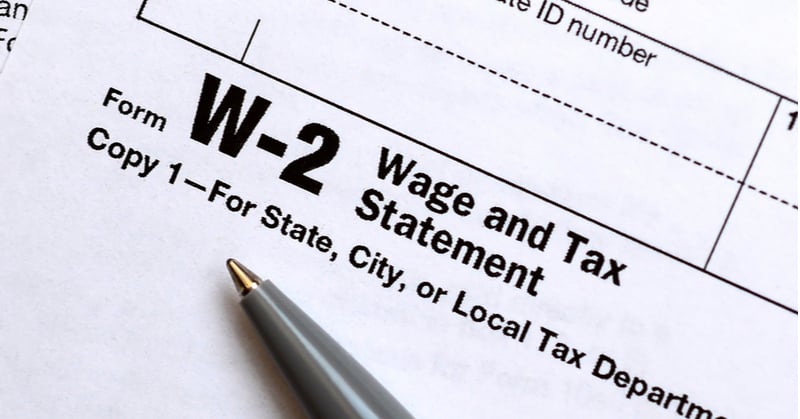You know how important it is to correctly classify a worker as either an independent contractor or employee. But do your clients?
Some of your clients may come to you for guidance before classifying a worker. Some might not. To help all your clients avoid misclassifying their workers, here are four tips to pass along.
Four worker classification tips to share with your clients
Between 10 and 25 percent of employers misclassify at least one worker as an independent contractor. Why? Some businesses try to be sneaky and save some money, yes. But most of the time, it’s because worker classification is hard.
An independent contractor is someone who works for themselves and performs work for other businesses. On the other hand, an employee is someone who is employed by a business, and therefore dependent on their employer.
To improve worker classification accuracy for your clients and their businesses, give your clients a rundown of the following tips.
1. Understand why it matters
Worker classification determines whether a worker goes on payroll or not. When a business classifies a worker as an independent contractor, they do not add them to their payroll. Instead, they treat the worker as an independent contractor.
So, what’s the big deal about misclassification? Independent contractors do not receive:
- Coverage under the Fair Labor Standards Act (minimum wage and overtime)
- Split employer/employee Social Security and Medicare tax responsibility
- Workers’ compensation insurance
- Unemployment insurance
- Employer-sponsored benefits (e.g., retirement plans, health insurance, PTO, etc.)
Why should your clients care? Businesses that misclassify a worker as an independent contractor may need to pay penalties, back taxes, and interest.
2. Follow worker classification guidelines
There are a number of worker classification guidelines businesses may need to consider, including rules from the:
- Department of Labor (DOL)
- IRS
- State
Department of Labor
The Department of Labor uses an economic realities test to determine worker classification status. However, the test tends to change with new administrations (which you’ll read about under Tip #3).
Currently, the DOL’s test uses a number of factors to determine whether a worker is dependent on a business (employee) or not (contractor). Workers who are dependent on a business are protected under the Fair Labor Standards Act (FLSA).
- How integral the work is to the business
- How permanent the relationship is
- The amount of the worker’s investment (facilities and equipment)
- How much control the worker has over their work
- The worker’s opportunity for profit and loss
- How much the worker’s initiative in open market competition with others impacts their success
- The degree of independent business organization and operation
IRS
The IRS also has a set of rules on worker classification for the purpose of taxes. Independent contractors are generally not subject to income, Social Security, and Medicare tax withholding.
To determine whether a worker is an independent contractor or employee under IRS rules, businesses must consider the following three criteria:
- Behavioral: Whether the business controls what the worker does and how they do their job
- Financial: Whether the business controls the financial aspects of the worker’s job (e.g., how the worker is paid, reimbursements, and supplies)
- Type of Relationship: Whether there are written contracts and employee benefits, as well as how integral and permanent the work is
If your client is having trouble determining IRS worker status, they can file Form SS-8, Determination of Worker Status for Purposes of Federal Employment Taxes and Income Tax Withholding. The IRS then sends a decision letter.
State
A number of states have stricter independent contractor vs. employee requirements than the federal guidelines. California’s ABC Test is arguably the most well-known state worker classification law.
For example, California’s ABC Test classifies workers as employees unless the worker:
- Is free from the control and direction of the hirer in relation to the performance of the work, both under the contract and in fact;
- Performs work that is outside the usual course of the hirer’s business; AND
- Is customarily engaged in an independently established trade, occupation, or business of the same nature as the work performed for the hirer
Businesses must check with the state Department of Labor to learn about state-specific classification regulations.
3. Stay up-to-date on rule changes
When it comes to taxes and worker-related rules, changes are constant. That’s why you and your clients must stay up-to-date on the latest news … like the Department of Labor’s final rule, known as the “Independent Contractor Status Under the Fair Labor Standards Act.”
On January 6, 2021, the DOL released its final rule, which was set to go into effect on March 8, 2021. Still using a multiple-part economic realities test, the new DOL rule instead draws out two core factors, which are the:
- Nature and degree of control over the work
- Worker’s opportunity for profit or loss based on initiative and/or investment
However, the Biden Administration put a freeze on the rule, meaning it won’t go into effect until May 7, 2021. Or, the administration could decide to change things up and use a version of the ABC Test as the federal standard, something the president has vocalized support for.
What will happen? That’s what we need to stay tuned for. And whatever does happen, businesses may need to change up their worker classification, which could lead to the need to...
4. Convert contractors to employees, if applicable
Whether it’s due to misclassification or changes in classification guidelines, there may come a time when a business needs to convert contractors to employees.
To convert contractors to employees, a business needs to:
- Notify the worker of the classification change
- Gather onboarding documents (e.g., Forms W-4 and I-9)
- Make decisions about the employee, including pay rate and frequency
- Add the new employee to the payroll
- Offer employee benefits (e.g., health insurance)
- Distribute Form W-2 annually, not Form 1099-NEC
If a client needs to convert a contractor to employee status, they need to keep records of everything, especially if they owe taxes and penalties. As their trusted accountant, you can help guide them through this process.
Want to learn more about the difference between contractors and employees? Download Patriot Software’s free worker classification guide.
For clients who now need to run payroll…
Do your clients now have employees instead of contractors? Then they need an accurate way to run payroll.
To help them through the payroll process, consider signing up for Patriot’s Partner Program. That way, you can run payroll for your clients or let them run it themselves.
Either way, you receive special pricing, dependable and accurate software, free payroll for your firm (with six or more active clients), and a free trial for each new account.
.png?width=150&height=63&name=TWRlogo-regmark_blueblack%20(1).png)
.png)










Do you have questions about this article? Email us and let us know > info@woodard.com
Comments: